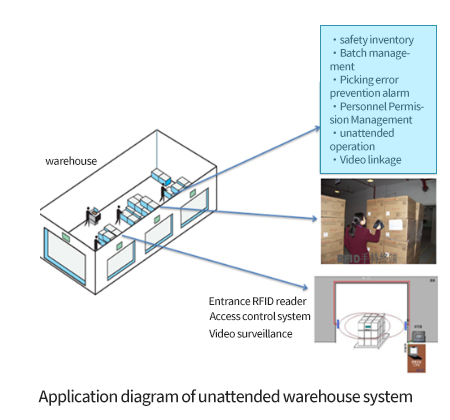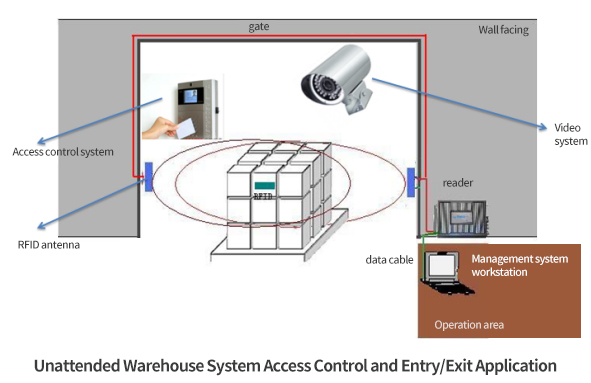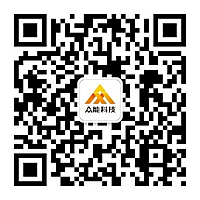Traditional warehouse management generally relies on non automated, paper-based systems to record and track incoming and outgoing goods, and is entirely manually managed within the warehouse. Therefore, the efficiency of warehouse management is extremely low, and the scale of the warehouse that can be managed is also very small. This not only causes a significant waste of human resources, but also results in slow data entry speed and low accuracy due to human factors. With the continuous development of enterprise scale, the types and quantities of materials managed in warehouses are constantly increasing, and the frequency of inbound and outbound operations is sharply increasing. Warehouse management operations have become very complex and diverse, and traditional manual warehouse operation modes and data collection methods are no longer able to meet the fast and accurate requirements of warehouse management, seriously affecting the operational efficiency of enterprises and becoming a major obstacle to the development of enterprises.
Compared to traditional manual warehouses, unmanned warehouses can achieve automatic material picking, automatic real-time inventory statistics, and manual picking. When the minimum inventory of spare parts and consumables reaches, the system will provide procurement reminders, and at the same time, intelligent terminals can be used to collect and modify material information. In terms of manpower, the existing warehouse management personnel are only responsible for the basic work such as putting the warehoused materials on shelves and adjusting the warehouse location, which greatly reduces the workload of traditional manual warehouse management, completely eliminates the problem of inaccurate manual records, ensures the accuracy and real-time of inventory information, and truly realizes the Paperless office management of warehouse operations. In addition, when encountering sudden emergencies and emergency repairs, self-service material picking in unmanned warehouses can achieve 24-hour on-demand picking, eliminating the problem of traditional manual warehouse management that is difficult to control emergency material picking time outside of working hours. When there is a sudden emergency or emergency repair, the recipient uses an access card or fingerprint recognition to enter and exit the warehouse. Click on the emergency material requisition module on the front-end computer, and all materials in the warehouse will be displayed on the screen. Select the required materials according to the emergency needs, enter the quantity of materials to be requisitioned, and the item requisition registration will be completed. The exploration and implementation of unmanned warehouses have optimized work modes, reduced human resources and warehouse management costs, promoted the intensive management of human and material resources on the front line of warehouses, and improved the level of material management.
3.1 Identity Information Identification System
The unmanned warehouse is based on low-frequency RFID technology and produces a warehouse access recognition card through an internal network access control network. The identification card is divided into personnel permission recognition and task order recognition. Only personnel with permission can enter the unmanned warehouse through employee card swiping if they have a picking list. The system will automatically record the identity, time, and material information of the personnel entering. The access control identification card can only be changed by management personnel to avoid management confusion. When the access control card is lost or personnel are transferred, permission adjustments should be made in a timely manner.
3.2 Informatized Material Distribution System
The technical management mode of Super high frequency RFID technology is adopted for material management. According to the coding requirements, each material uses RFID technology to write the specification and quantity of materials, storage location information, and inbound and outbound information into the chip and make electronic tags. The electronic tag information is automatically stored in the back platform of the management system.
The handheld RFID radio frequency terminal can read and write electronic labels, manage inventory by scanning inventory documents, and also perform inventory counting by scanning storage location codes and physical codes. The Super high frequency RFID radio frequency technology can be used for mass production, long distance and read-write. The fixed RFID radio frequency terminal is installed to manage the inbound and outbound of materials. The inbound and outbound information is collected through information transmission technology. When the outbound materials are different from the picking list, the distribution system will automatically alarm and lock the outbound gate.
Establish an emergency card. When there is a natural disaster or emergency repair event, the emergency card management personnel will swipe the card to enter the warehouse for emergency material requisition. After material requisition, the person in charge will input the material requisition information into the distribution system and report it to the material supply company in a timely manner.

3.3 Infrared Video Monitoring System
Each unmanned warehouse is equipped with infrared high-definition cameras that support web browsing. Management personnel can inspect the warehouse by adjusting the camera's angle and focal length, and timely understand the warehouse's operating environment and material status. At the same time, when there is a material requisition in the warehouse, it is possible to verify the requisition personnel and materials to prevent unrelated personnel from entering the warehouse and mistakenly picking materials. The camera is recorded 24 hours a day, and the image information is automatically saved in the backend server for easy investigation and evidence collection when needed.

The unattended management mode of the warehouse is realized through the low-frequency and Super high frequency radio frequency technology of RFID. In the whole RFID warehouse management and operation, the low-frequency RFID technology is used to realize the access control authorization management. The Super high frequency RFID remote identification, mass reading and accuracy are applied to the warehouse management in the outbound, warehousing, inventory, sorting and other processes. The characteristics of RFID are used to change the traditional inventory management mode, The intelligently collected data is analyzed and processed to gain intelligent insights, improve business lean, and maximize the investment value of the enterprise, save human resources, and bring a new way of warehouse management to the enterprise.
1. Improving efficiency
Utilizing RFID technology to automatically identify and improve the efficiency of warehouse core business management during the process of warehousing, outbound, and inventory.
2. Reduce manpower
Through an unmanned management mode and the efficient use of RFID technology, we can reduce personnel investment.
3. Cost savings
Increase resource utilization, reduce operational complexity, and improve customer response speed, reducing overall operational costs.
4. Lean management
Improve business management, avoid manual collection errors, improve business processing accuracy, and meet the requirements of lean enterprise.







